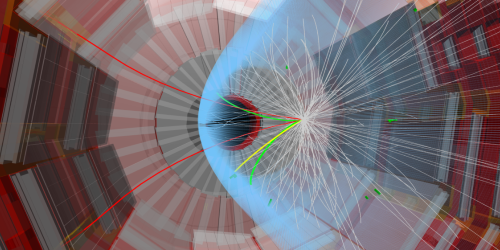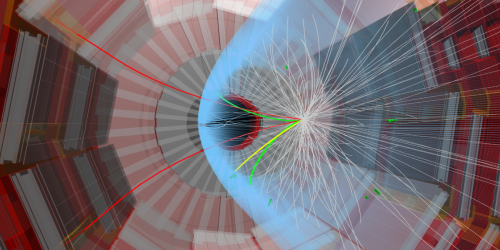Record LHC Haul Catches Double Meson Signal
Quantum chromodynamics (QCD) is currently the best description of how quarks interact via the strong nuclear force to form baryons (three-quark particles such as protons and neutrons) and mesons (quark-antiquark pairs). The predictions of QCD are well supported by observations at low energies but are still relatively untested for combinations of more massive quarks. Now, an analysis of data from the Large Hadron Collider (LHC) at CERN in Switzerland has identified the signature of two distinct states of a specific particle made up of massive quarks. The particle is the meson, comprising a bottom quark paired with a charm antiquark or an antibottom paired with a charm quark.
Mesons exist in various excitation states that are determined by the spin and orbital angular momenta of their constituent quarks. Two decades ago, researchers at Fermilab’s Tevatron observed the meson’s ground state, which physicists expected to be just the first of many possible states. Subsequent searches had mixed results: one detector at the LHC spotted what appeared to be a single excitation state, while another, operating at a similar energy, did not. Now the CMS Collaboration at CERN has confirmed the earlier positive result and has resolved the observed signal into a pair of closely spaced excitation states.
The meson combines a heavy quark (or antiquark) with a lighter partner, so researchers think that its properties should be between those of mesons comprising only light constituents and those of heavy-quark mesons. Detailed predictions are difficult, however, as the lopsided distribution of mass might make some approximations invalid. Characterization of the particle’s excited states means that certain QCD models can now be tested, advancing our understanding of quark dynamics.
This research is published in Physical Review Letters.
–Marric Stephens
Marric Stephens is a freelance science writer based in Bristol, UK.





